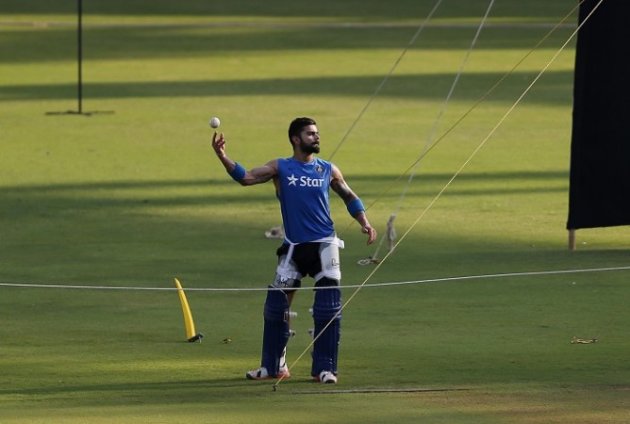 Home Tests mean more commonplace wickets and with
that comes the probability of India backtracking to the four-bowler hypothesis
and acquiring an additional batsman. At the point when Virat Kohli declared at
the hurl of the fourth Test match against the West Indies in Trinidad that
Cheteshwar Pujara had come in forRavindra Jadeja, there were many eyebrows
raised: What happened to the five-bowler hypothesis then, which Kohli has been
upholding to such an extent?
Home Tests mean more commonplace wickets and with
that comes the probability of India backtracking to the four-bowler hypothesis
and acquiring an additional batsman. At the point when Virat Kohli declared at
the hurl of the fourth Test match against the West Indies in Trinidad that
Cheteshwar Pujara had come in forRavindra Jadeja, there were many eyebrows
raised: What happened to the five-bowler hypothesis then, which Kohli has been
upholding to such an extent?
The India chief clarified the explanation for the
choice to play Pujara, while addressing columnists after the fourth Test match
against the West Indies was drawn, with no play conceivable on the last four
days.
"We thought when we lost a Test in Galle [against
Sri Lanka last year], we were a batsman short there," Kohli help. "In
the arrangement against South Africa at home too we were in a bad position many
times since we were a batsman short. We needed to experiment with this mix.
"In the event that we play four master bowlers
back home, when we feel we don't have the requirement for the fifth bowler...
on the off chance that you play three spinners on twist amicable wickets that
ought to take care of business. Regardless of the possibility that you play two
spinners and two quicks, Rohit [Sharma] and [Murali] Vijay can come in and dish
ten overs for me.
"Far from home you require all your best
bowlers since you don't comprehend what the conditions will do or how the
wicket will carry on. That is a perspective that we felt, against the solid
groups that we are going to play against at home, world-class sides, they are
going to gain by those windows of chance that we give them.
"This was something we needed to attempt, in
the event that we need to play with this mix proceeding the group ought to be
OK with it. What's more, they ought to know how to play in this circumstance
too. In the event that you play with stand out mix groups are going to begin
arranging better against you. You should be adaptable. Shockingly we couldn't
get diversion time."
Kohli has been a major supporter of playing five
bowlers, so that may sound somewhat conflicting, however on the wickets that
India are relied upon to play in back home – they are planned to play 13 Test
matches - there is a decent risk that two spinners and two quick bowlers will
carry out the occupation. On the off chance that the wicket is required to take
turn, one quick bowler and three spinners ought to be sufficient, so
experimenting with the blend with an additional batsman in the lineup is not
such a terrible thing. While extraordinary groups are made by taking risks,
logic, when required is a similarly imperative quality.
Quality is the thing that India appeared in this
arrangement against the West Indies, specific with the batting in the lower
center request. R Ashwin, who was named the man of the arrangement, appeared to
make the most of his part at No.6 – with the additional batsman now, however,
he is prone to drop down to No.7 or No.8 – while Wriddhiman Saha, while still
yet to altogether persuade, hinted at making the wicketkeeper position his own.
He won't not be a MS Dhoni – but rather then no one was anticipating that him
should be that – yet he has some battling qualities that convey a considerable
measure of positives to this India side.A result in the last Test match would
have kept India as the No.1 positioned group on the planet, however a washout
has implied Kohli's side have now dropped down to No.2, with Pakistan taking
that top spot interestingly since the initiation of these rankings in 2003.
Kohli, however, did not appear to be excessively
troubled. "We generally knew when we went up to No.1 this was brief,"
Kohli said at the presentation function. "Alternate groups have played 10-15
coordinates more than us, and the opposition is close to the point, that the
rankings will undoubtedly continue evolving.
"We simply need to put a strong exertion back
home and we will see where we wind up toward the end of the season."
Post a Comment